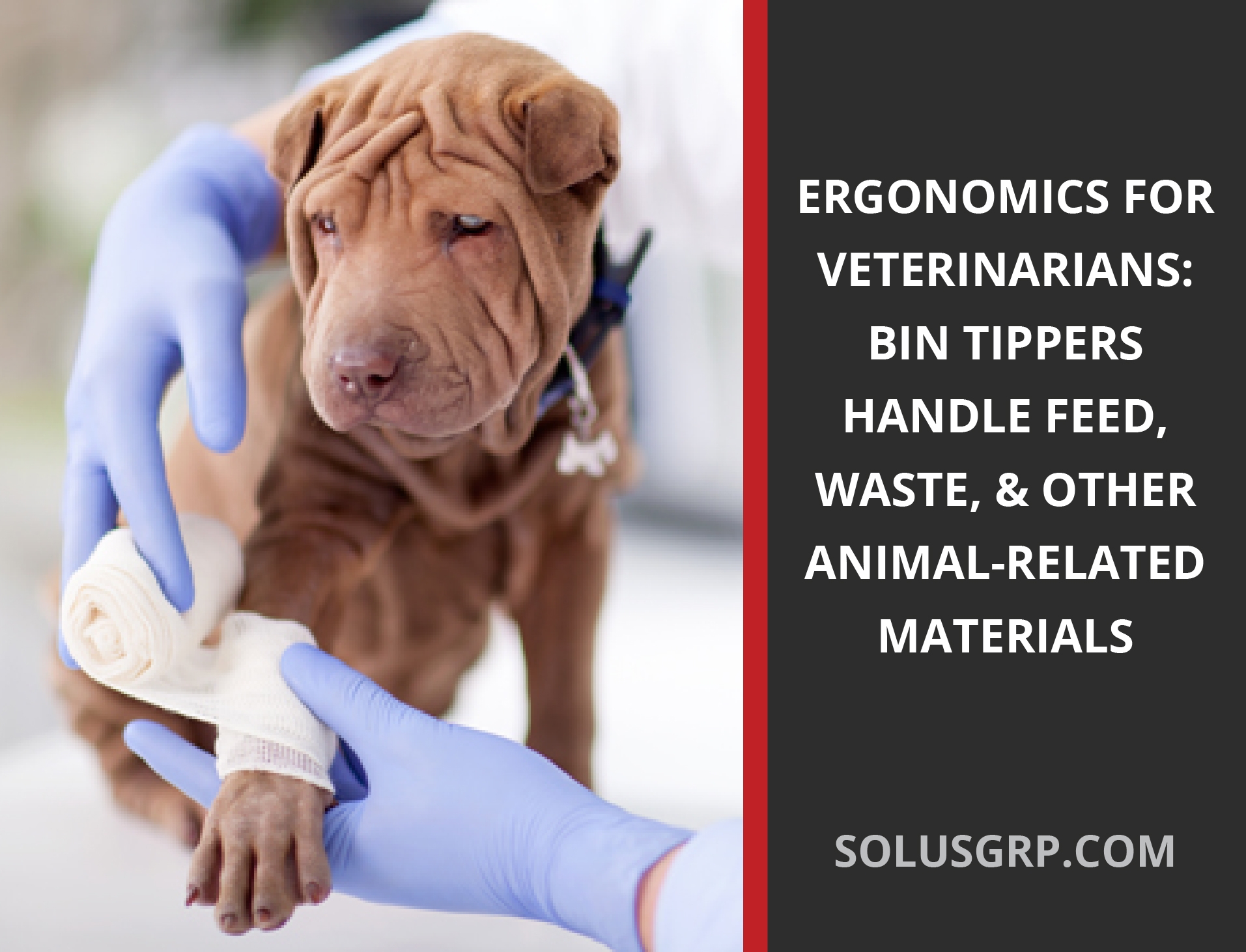We use cookies to make your experience better. To comply with the new e-Privacy directive, we need to ask for your consent to set the cookies. Learn more.
Ergonomics for Veterinarians: Bin Dumpers for Feed, Waste, and Other Animal-Related Materials
Animal care workers face unique material handling challenges; ergonomics for veterinarians is an ongoing concern within the industry. The American Veterinary Medical Association (AVMA) first addressed the issue in 2002, when the AVMA Executive Board created an Ergonomic Task Force to develop guidelines for preventing workplace injuries at the vet's office.
The AVMA Ergonomic Task Force notes that ergonomic guidelines for the veterinary industry must come from within — an outside regulating force might miss some of the peculiarities of the business. This underscores the unusual nature of ergonomics risks in the veterinary industry as opposed to, say, warehousing and logistics.
"The impact could be negative if factions outside our profession formulate the [ergonomic] guidelines and thereby set standards and regulations for our profession," states the AVMA policy. However, the policy-makers state, "The impact should be positive if appropriate guidelines are formulated by veterinarians for use by the veterinary profession." 
So how do veterinary practices go about enjoying the "positive impact" of the AVMA guidelines? It starts, says the Task Force, with identifying a "Caution Zone Task." That's any activity that requires one or more of the following ergonomic risk factors:
- Repetitive motions
- Holding the body in an awkward position for extended periods of time
- Overexertion of the hands, as in holding a tight grip for too long
- Vibration in the hands and/or arms
- Impact on the hands or knees
- Lifting heavy loads, lifting loads frequently, or handling loads awkwardly
It's this last risk factor that concerns us here. The fact is, veterinary staff handle bulk loads that are often awkward or heavy — and even classified as hazardous waste, triggering particular material handling requirements. According to the AVMA Ergonomic Task Force guidelines, when possible, employers should address ergonomic hazards through engineering controls, that is, implementing material handling equipment that removes the risk of musculoskeletal injury from the employee. The AVMA gives an example: Install lift tables to elevate large, heavy animals for treatment, reducing the risk associated with heavy lifting.
Similarly, Bin Dumpers from Solus Group provide an engineering control that eliminates risks involved in handling heavy loads. These trash can dumpers lift and empty heavy industrial containers, which can prevent the risk of musculoskeletal disorders during common veterinary tasks, including:
- Mixing, handling, and emptying feed.Stainless steel models are available for veterinarians who mix their own food for patients. Stainless steel is the material of choice for food contact surfaces.
- Handling animal waste.Dogs and cats transfer dangerous zoonotic diseases through their waste, including toxoplasmosis, giardiasis, and cryptosporidiosis. Busy veterinary practices that collect stool samples and house animals on the premises must dispose of this risky substance without any contact with the worker. Bin Dumpers outfitted with the optional PET-G Operator Guard can lift and empty waste containers while completely guarding the operator from contact with the load.
- Safely disposing of biohazardous wastes associated with veterinary work.The remains of animals infected with microorganisms known to be pathogenic to humans are considered biohazards, so are cultures and stocks with these pathogens, as well as sharps. Bin Dumpers prevent contact with these biohazards during handling and disposal.
Bin Dumpers help to prevent musculoskeletal injuries for animal care workers. When we improve ergonomics for veterinarians, we protect the health of those who keep our animals healthy, and that's a worthwhile investment.
References:
"Biomedical Waste Disposal & Management for Veterinary Clinics." KingCounty. Seattle & King County Public Health, n.d. PDF. 2 Apr. 2018.
"Veterinary Ergonomic Guidelines." AVMA. American Veterinary Medical Association, 2018. Web. 2 Apr. 2018.
Weese, J. Scott, Andrew Peregrine, and Julie Armstrong. "Occupational safety and health in small animal veterinary practice: Part II — Parasitic zoonotic diseases." NCBI. The Canadian Veterinary Journal, Oc. 2002. Web. 2 Apr. 2018.
